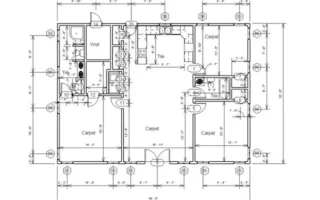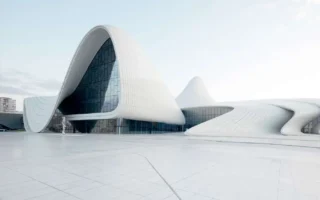Introduction:
Architecture, often hailed as the mother of all arts, is far more than just the construction of buildings; it is the embodiment of human aspirations, cultural expressions, and societal values. From ancient temples to modern skyscrapers, architecture shapes the world we inhabit and influences the way we experience space. In this exploration, we delve into the multifaceted purpose of architecture, uncovering its role as a medium of expression, a facilitator of human interactions, and a reflection of our collective identity.
I. Shelter and Protection:
A. Fundamental Need:
At its core, the primary purpose of architecture is to provide shelter and protection from the elements, ensuring the safety and well-being of inhabitants.
B. Functional Design:
Architectural design addresses practical considerations such as climate, site conditions, and building materials, optimizing spaces for comfort, functionality, and durability.
II. Cultural Expression:
A. Identity and Heritage:
Architecture serves as a tangible expression of cultural identity, reflecting the traditions, values, and aspirations of a society.
B. Symbolism and Meaning:
Buildings often convey symbolic meanings and narratives, celebrating historical events, religious beliefs, and communal rituals through their design and ornamentation.
III. Spatial Organization:
A. Human Experience:
Architecture shapes the way we navigate and interact with space, influencing our perceptions, emotions, and behaviors.
B. Hierarchy and Flow:
Spatial organization principles guide the arrangement of rooms, circulation paths, and visual axes within buildings, creating a sense of order, hierarchy, and rhythm.
IV. Social Cohesion:
A. Community Spaces:
Architecture plays a vital role in fostering social interactions and community engagement by providing gathering places such as plazas, parks, and public buildings.
B. Inclusive Design:
Accessible and inclusive architectural design ensures that spaces are welcoming and accommodating to people of diverse ages, abilities, and backgrounds.
V. Environmental Stewardship:
A. Sustainable Practices:
In an era of environmental awareness, architecture has a responsibility to minimize its ecological footprint and promote sustainable design solutions.
B. Passive Design Strategies:
Incorporating passive design strategies such as natural ventilation, daylighting, and thermal insulation reduces energy consumption and enhances occupant comfort.
VI. Economic Prosperity:
A. Urban Development:
Architecture plays a crucial role in shaping the economic vitality and competitiveness of cities through the development of commercial, residential, and mixed-use projects.
B. Tourism and Cultural Heritage:
Architectural landmarks and cultural sites attract visitors, stimulate local economies, and contribute to the preservation of cultural heritage.
VII. Inspiration and Creativity:
A. Innovation and Ingenuity:
Architecture inspires creativity and innovation, pushing the boundaries of design through experimentation with form, materials, and technology.
B. Aesthetic Experience:
Architectural beauty enriches our lives, evoking awe, wonder, and contemplation through the harmonious interplay of light, space, and form.
Conclusion:
The purpose of architecture extends far beyond the mere construction of buildings; it encompasses a profound array of social, cultural, environmental, and economic dimensions. As a medium of expression, architecture shapes our physical environment and influences our perceptions, behaviors, and experiences. By recognizing the multifaceted purpose of architecture—as a shelter and protection, cultural expression, spatial organization, social cohesion, environmental stewardship, economic prosperity, and source of inspiration and creativity—we gain a deeper appreciation for its transformative power and enduring significance in shaping the world we inhabit.




